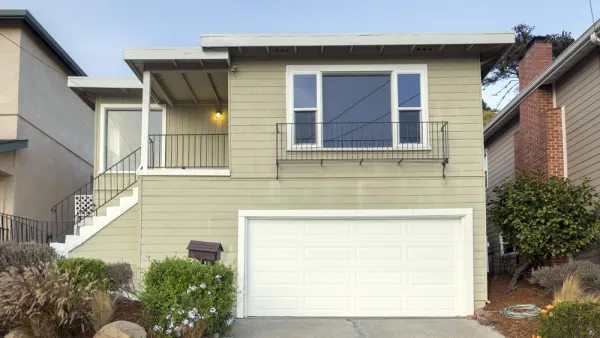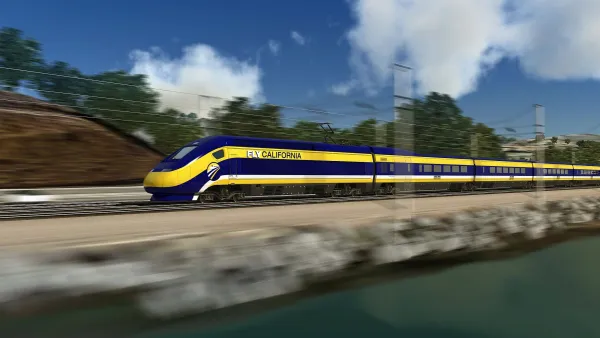Jerry Brown signed a $156.3-billion budget on June 20 that marks a new day for greenhouse gas-reducing transportation and sustainable communities projects due to new revenues from the state's cap and trade market now and, particularly, in the future.

While the controversial $250 million for the embattled San Francisco to Los Angeles bullet train received from cap and trade much attention in the mainstream media, allocations to transit, affordable housing and other categories received much less attention except in the nonprofit world where groups fiercely fought for them. Stuart Cohen, executive director of TransForm, lists the winners outside of high speed rail for the fiscal year that begins July 1:
- $25M for Transit and Intercity Rail Capital Program;
- $25M for Low Carbon Transit Operations;
- $65M for Affordable Housing;
- $65M for Sustainable Communities; and
- $200M for Low Carbon Transportation.
These cap and trade revenues are not like other budgetary items where the governor and legislature squabble annually over how much to allocate. Sixty percent of future revenues - and they are expected to grow substantially as more industries "fall under the cap", will be split by three categories:
- 25% for High Speed Rail on an annual basis
- 35% to the Sustainable Communities Program and transit on an annual basis into the following groups:
- 10% for Transit and Intercity Rail Capital Program;
- 5% for Low Carbon Transit Operations; and
- 20% for Affordable Housing and Sustainable Communities [See below for more detail].
That leaves 40% of revenue that is discretionary. Cohen suggests beneficiaries could be Low-Carbon Transportation, Energy Efficiency, Urban Forestry, Forestry, Water, and Waste.
Amanda Eaken of NRDC includes a pie chart of the first year allocation and future allocations in her blog about how the new budget implements "California’s landmark Sustainable Communities and Climate Protection Law (SB 375), both this year and into the future."
Eaken describes the sustainable communities breakdown:
- 20% for housing and sustainable communities (including planning, active transportation, transit and other supportive infrastructure, and not less than half for housing) – administered by the Strategic Growth Council and the Air Resources Board.
Just how much revenue are we talking about here? AP reporter Juliet Williams writes that the single largest category, high speed rail, could receive a whopping "$3 billion to $5 billion a year in coming years" from the cap and trade fund, at least through 2020 which is when the law that authorizes it, AB 32 expires.
One important caveat: litigation. This is California, after all.
FULL STORY: Legislature reaches landmark budget agreement on cap-and-trade

Analysis: Cybertruck Fatality Rate Far Exceeds That of Ford Pinto
The Tesla Cybertruck was recalled seven times last year.

National Parks Layoffs Will Cause Communities to Lose Billions
Thousands of essential park workers were laid off this week, just before the busy spring break season.

Retro-silient?: America’s First “Eco-burb,” The Woodlands Turns 50
A master-planned community north of Houston offers lessons on green infrastructure and resilient design, but falls short of its founder’s lofty affordability and walkability goals.

Test News Post 1
This is a summary

Analysis: Cybertruck Fatality Rate Far Exceeds That of Ford Pinto
The Tesla Cybertruck was recalled seven times last year.

Test News Headline 46
Test for the image on the front page.
Urban Design for Planners 1: Software Tools
This six-course series explores essential urban design concepts using open source software and equips planners with the tools they need to participate fully in the urban design process.
Planning for Universal Design
Learn the tools for implementing Universal Design in planning regulations.
EMC Planning Group, Inc.
Planetizen
Planetizen
Mpact (formerly Rail~Volution)
Great Falls Development Authority, Inc.
HUDs Office of Policy Development and Research
NYU Wagner Graduate School of Public Service



























